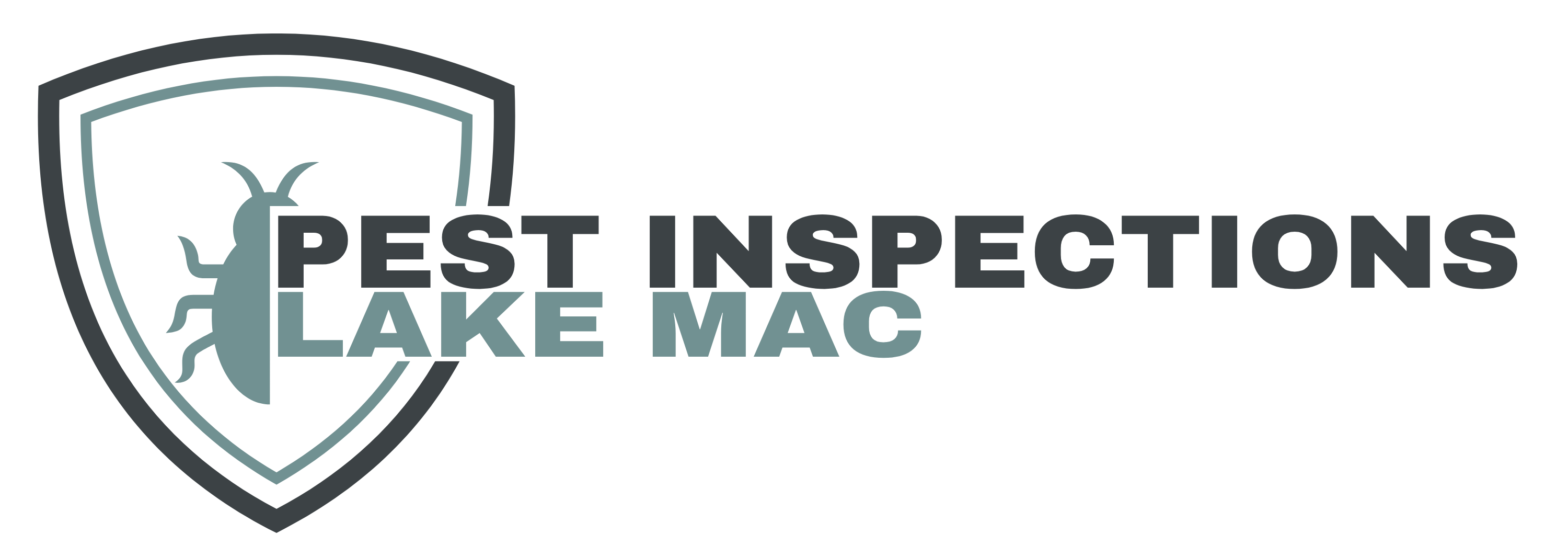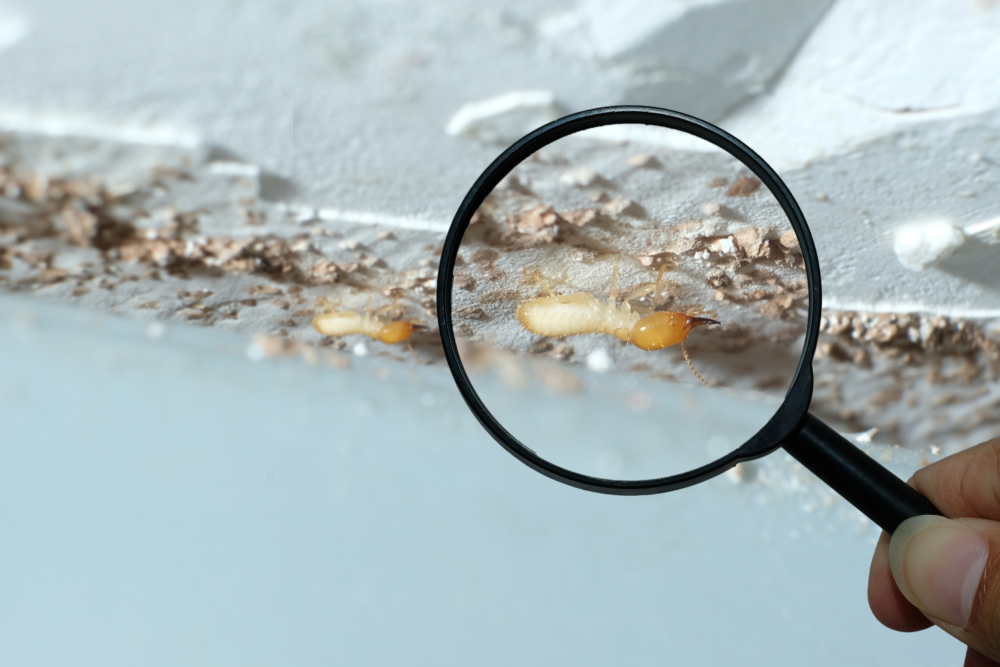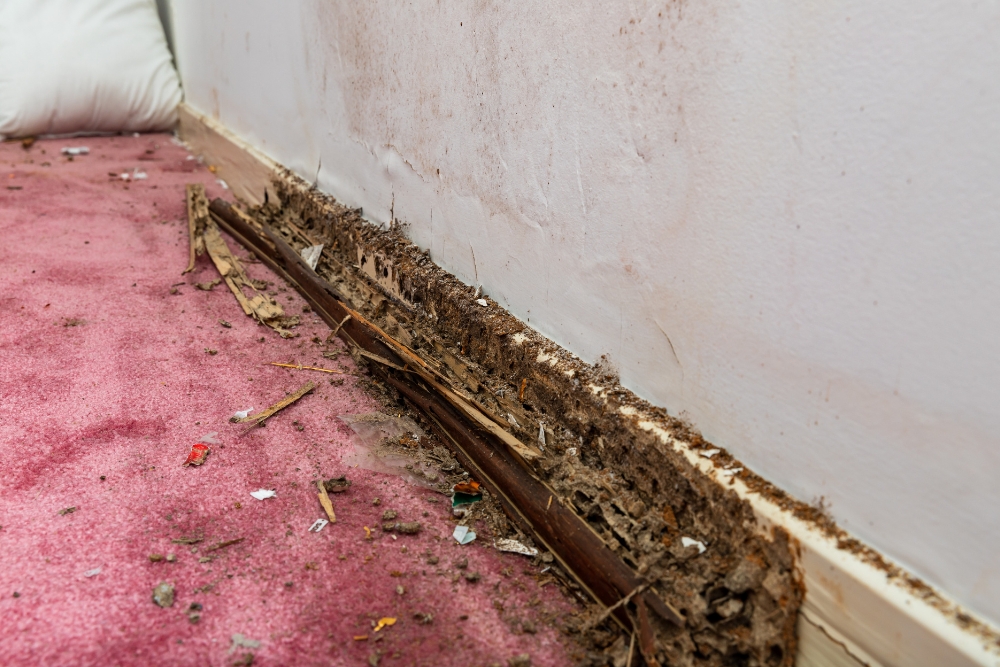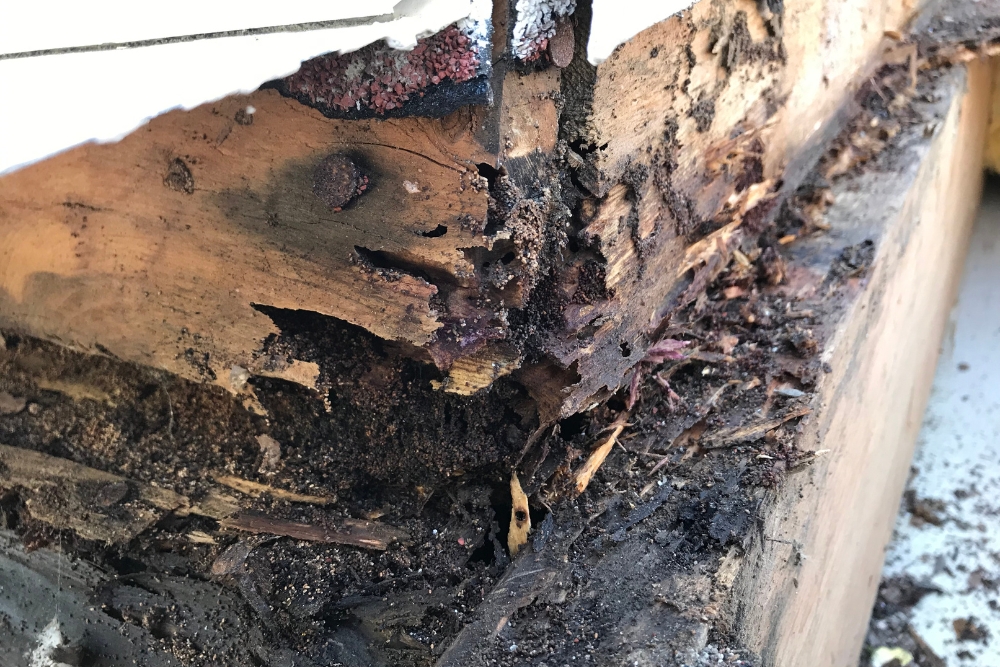The fight against pests starts with recognising their first signs. This article discusses the critical role early detection plays in preventing damage to homes and health risks associated with common household pests such as insects, rodents, and termites.
Spotting trails of ants, shredded skins from cockroaches, or gnaw marks from rodents early on can save you a lot of trouble and expense. Additionally, we’ll cover how using a variety of strategies like sealing up entry points and employing natural predators helps manage pest populations in an environmentally friendly way.
Regular checks for signs of infestation and maintaining good sanitation practices are essential steps towards keeping your home pest-free. Acting quickly at the first sign is crucial.
Keep reading to discover effective eradication strategies that safeguard both your home and health.
Key Takeaways
- Spotting early signs of pests, like trails of ants, shredded skins from cockroaches, or gnaw marks from rodents, can prevent damage to your home and health risks.
- Using a mix of strategies such as sealing entry points and employing natural predators helps manage pest populations without harming the environment.
- Regular checks and proper sanitation practices play a crucial role in keeping pests at bay. It’s important to act quickly if you notice signs of infestation.
Importance of Early Detection of Pests
Early detection of pests plays a vital role in preventing not only significant property damage but also in mitigating health risks associated with infestations. By being vigilant and identifying the earliest signs of pest presence, property owners can initiate prompt and decisive action.
This proactive approach ensures that measures can be taken to eradicate pests before they have the opportunity to multiply and cause more extensive issues. Effective eradication at the onset of an infestation minimises the need for more aggressive and potentially harmful control methods down the line. Ultimately, early detection and timely intervention are key to maintaining a safe, healthy, and pest-free environment.
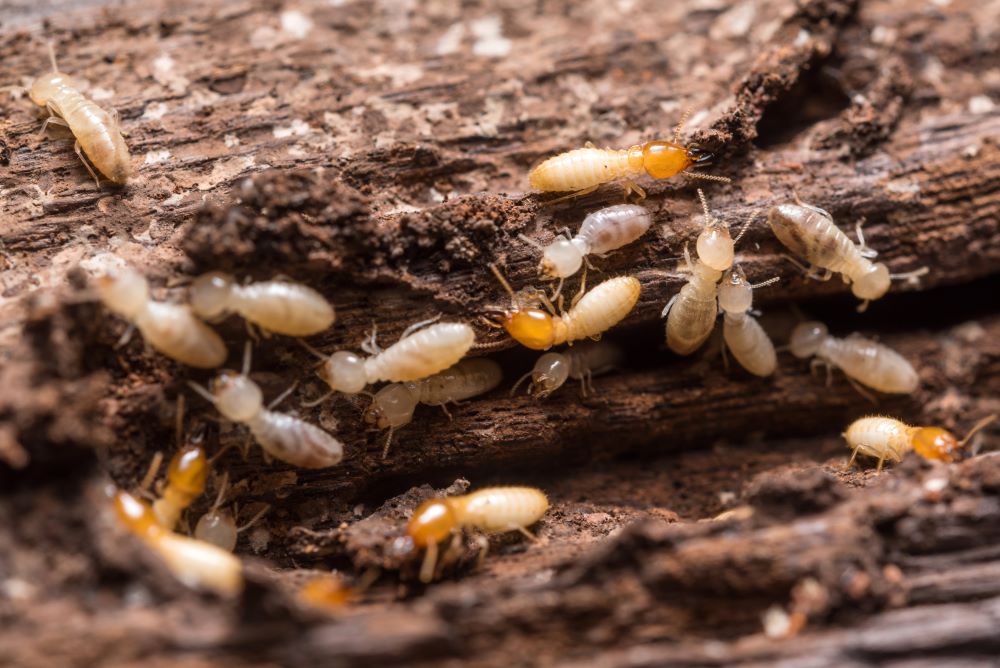
Potential damage to property
Pests such as termites and rodents can wreak havoc on structures, leading to significant financial losses. Termites chew through wood, undermining the integrity of buildings, while rodents gnaw on electrical wires, posing fire hazards and causing expensive damages.
Rodents’ constant gnawing can lead to critical structural damage and potential fire hazards due to damaged electrical wiring.
Health risks
Health risks associated with pest infestation can pose serious concerns for both physical and mental well-being. Pests such as rodents, cockroaches, and bed bugs are known carriers of diseases that can be transmitted to humans.
Rodents can spread harmful bacteria through their droppings and urine, while cockroaches can trigger allergies and asthma in some individuals. Additionally, bed bug bites can cause skin irritation and have psychological implications.
Thus, early detection and effective pest management strategies are crucial in preventing these health risks from escalating further.
Identification of Common Household Pests
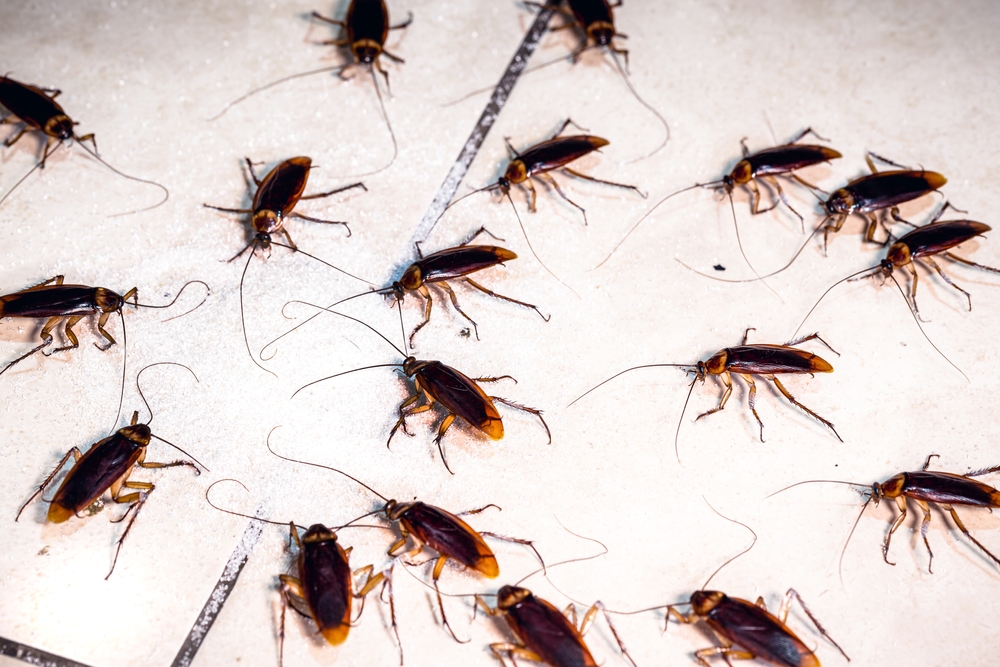
Identifying common household pests is the first step in implementing an effective pest management strategy. Knowing which pests – including insects like ants, cockroaches, and bed bugs; rodents such as mice and rats; or even termites – are prone to infesting your space is crucial.
Each type of pest presents unique challenges and risks, ranging from property damage to potential health hazards. By recognising these pests early, homeowners can take targeted action to prevent infestations from becoming more severe. Understanding the specific signs of each pest’s presence enables prompt, appropriate measures, thus safeguarding both the health of household occupants and the integrity of the property itself.
Insects
Common household pests like ants, cockroaches, and bed bugs not only damage property but also pose serious health risks. To identify their presence, observe ants through visible trails in the kitchen, debris near openings, or rustling sounds within walls.
Cockroach infestations may be indicated by foul odours in confined spaces, the discovery of shredded skin or egg casings, and hidden excrement spots. For bed bugs, look for reddish-brown stains on bedding or furniture, tiny white eggs and shells, and a musty, sweet odour in rooms. Recognising these signs is crucial for timely intervention and pest control to safeguard your home and health.
Termites
Termites, also known as “silent destroyers,” can wreak havoc on your property, causing extensive damage to wooden structures and furniture. Identifying these pests early is crucial to preventing costly destruction. Here are the signs of termite infestation to look out for:
- Mud tubes: Termites build mud tubes along walls or the foundation of a structure to provide themselves with moisture while they travel between their colony and food source.
- Hollow-sounding wood: Tap wooden surfaces and listen for a hollow sound, which could indicate that termites have been feasting within.
- Discarded wings: After swarming, termites shed their wings, so finding discarded wings near windowsills or light sources could point to an infestation.
- Frass: This sawdust-like waste product is a sign of termite activity, often found near wooden structures or on the ground.
- Sagging floors or ceilings: Termite damage can cause these areas to sag or appear uneven, suggesting structural compromise caused by the pests’ destructive feeding habits.
- Subterranean tunnels: Termites create underground tunnels along the soil’s surface, visible as thin lines branching out from their nest sites in search of cellulose-rich material.
Being vigilant for these signs can help you detect termite presence early, enabling prompt intervention and protection of your property from extensive damage.
Rodents
Rodents, such as mice and rats, can pose significant problems if left unchecked. They are known for their ability to cause damage and spread diseases, making early detection crucial. Here’s what to look for when identifying a potential rodent infestation:
- Gnaw marks: Check for conspicuous gnaw marks on wood, plastic, or even electrical wiring.
- Droppings: Look out for small, pellet-like droppings around the premises or in secluded areas.
- Nests: Keep an eye out for shredded materials like paper or fabric where rodents may be building nests.
- Sounds: Listen for scratching or scurrying noises, especially at night.
- Tracks: Search for footprints in dusty or less frequently trafficked areas.
Recognising these signs early on can help prevent larger issues down the line and facilitate prompt eradication measures in the case of an infestation.
Signs of Infestation
Being vigilant about spotting visible pests, such as ants or cockroaches, in and around your living spaces is a critical first step in pest control. Beyond the immediate sighting of these invaders, it’s important to investigate for subtle signs that could indicate a larger, hidden issue.
Droppings or gnaw marks can reveal the presence of rodents, while a persistent musty odour might suggest a damp environment attracting a variety of pests. Similarly, damaged wood and furniture are telltale signs of termites or carpenter ants quietly compromising the structure of your home. Recognising these signals early provides the best chance for quick intervention, preventing potential infestations from escalating into more serious problems.
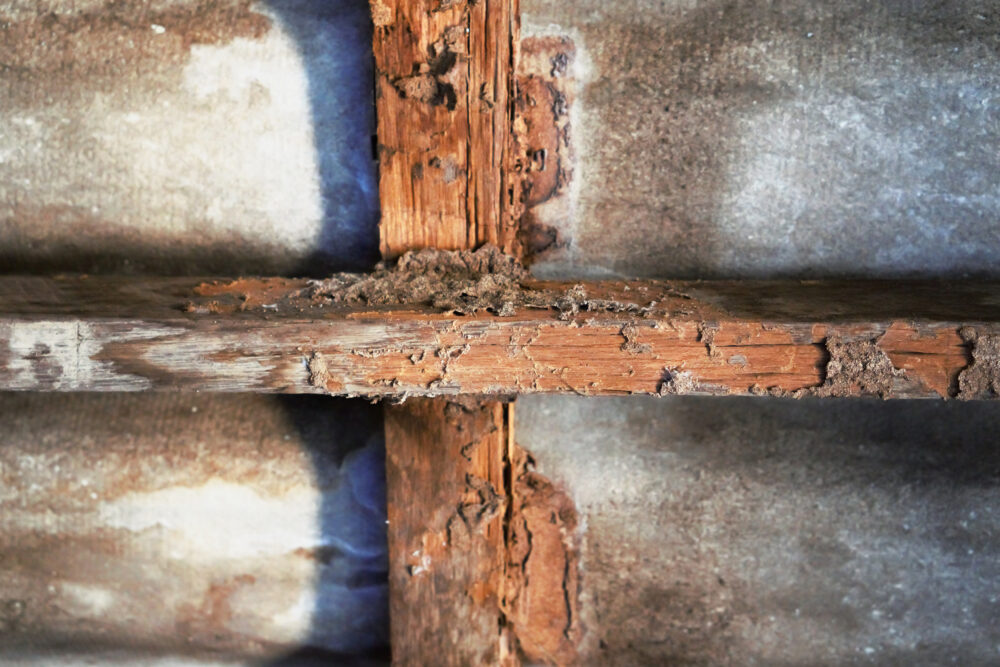
Visible pests
Observe any visible pests such as ants, cockroaches, or rodents in your living spaces. Act promptly upon noticing any signs of insect or rodent infestation to prevent further damage. Regularly inspect dark and cluttered areas where pests tend to hide, including basements, lofts, and under sinks.
Take immediate action if you see live pests on surfaces or floors within your home. Seek professional pest control services for thorough eradication and prevention strategies. Utilise chemical-free management options when possible to minimise health risks while effectively controlling the pest population in your household.
Droppings or gnaw marks
Let’s move from identifying visible pests to recognising droppings or gnaw marks. These signs often indicate the presence of rodents like mice and rats in your home, causing further damage and posing health risks.
It’s essential to promptly address these indicators to prevent a full-blown infestation, as they are among the initial signs that pests have invaded your space. Take swift action by implementing effective eradication strategies once you’ve spotted droppings or gnaw marks.
Detecting pest activity early can help intercept potential problems and minimise the impact on your property and well-being. Keep an eye out for such telltale indications of an infestation so that you can act swiftly before it escalates into a more significant issue.
Musty or foul odours
As with signs of pest infestation such as droppings or gnaw marks, musty or foul odours can also indicate the presence of pests in your home. Unpleasant smells, often overlooked, can be a sign of hidden pest activity.
These odours are commonly associated with rodent infestations and can signal the presence of mice or rats within walls, attics, or crawl spaces. In addition to rodents, musty odours may also indicate the presence of mould resulting from moisture caused by leaking pipes or other structural issues.
Ensuring early detection is crucial for successful pest management strategies like integrated pest management (IPM) and biological control. Neglecting musty or foul odours can lead to extensive damage not only to property but also to risks related to health and hygiene standards.
Damaged wood or furniture
Pests like termites and wood-boring beetles can cause significant damage to wooden structures and furniture. They tunnel through the wood, leaving behind holes, tunnels, or galleries.
Look for small pin-sized holes in wooden surfaces or sawdust-like frass near the damaged areas. Additionally, softwood that sounds hollow when tapped could indicate termite activity. It’s crucial to address any signs of damage promptly to prevent further infestation and costly repairs.
Effective Eradication Strategies

Identifying and implementing an integrated pest management (IPM) approach is crucial for the comprehensive eradication of pests. This method combines cultural, mechanical, biological, and chemical management techniques, each tailored to address the specific type of pest infestation you’re dealing with.
Cultural strategies might include altering the environment to make it less hospitable to pests, while mechanical methods can involve using physical barriers or traps. Biological control taps into natural predator-prey relationships to keep pest populations in check, minimising the need for chemical interventions. Yet, when necessary, carefully selected and applied chemical treatments provide an effective line of defence, ensuring a well-rounded and environmentally sensitive approach to pest management.
Integrated pest management (IPM)
Integrated Pest Management (IPM) is an eco-conscious methodology that blends multiple strategies to curb pest problems effectively. It starts with the meticulous inspection and monitoring of the premises to pinpoint potential pest hotspots and determine the level of infestation, often using traps and pheromone attractants.
Preventive measures are crucial, involving the sealing of entry points and adopting sanitation practices to eliminate resources that attract pests. Cultural tactics like altering the environment through strategic landscaping or crop alterations help in naturally deterring pest invasions. Where necessary, biological warfare is introduced by deploying natural predators to control pest populations, supplemented by mechanical barriers or devices for physical exclusion.
Chemical interventions are considered a last resort, focusing on the selective application of the least harmful pesticides to protect non-target species and the surroundings. This comprehensive approach requires ongoing education, training, and evaluation to ensure its success and sustainability, proving that IPM is not just about controlling pests but doing so in a manner that preserves environmental health.
Cultural management
Cultural management involves altering human habits and behaviours to make the environment less favourable for pests, reducing their reproduction and survival. Some effective cultural management practices include:
- Proper waste management – Regular disposal of garbage and maintaining clean surroundings to reduce food sources for pests.
- Sanitation practices – Keeping kitchens, storage areas, and living spaces clean and free of food crumbs or spills.
- Decluttering – Removing unnecessary items that can provide hiding spots for pests and obstruct pest control efforts.
- Good hygiene – Personal cleanliness and proper storage of clothing, bedding, and personal items to prevent infestations.
Mechanical management
Mechanical management involves physical methods to control pests without relying on chemicals or toxins. These strategies are environmentally friendly and can be used in a variety of pest control situations.
- Traps: Use traps such as snap traps, glue boards, or electronic traps to catch and eliminate rodents and insects without the use of chemicals. It’s a humane method to capture pests.
- Barriers: Installing physical barriers like screens on windows, door sweeps, and sealing cracks and crevices to prevent pests from entering buildings or infesting stored products.
- Vacuuming: Regular vacuuming and cleaning to remove pests, their eggs, and food sources can significantly reduce pest infestations in homes and businesses.
- Heat treatments: Using high temperatures to kill off pests like bed bugs by exposing them to heat levels that are lethal to the insects but safe for human environments.
- Removal of Infested Items: Discarding infested items such as furniture, bedding, or food supplies can help eliminate the source of the infestation.
Mechanical management presents effective ways of managing pest problems while reducing reliance on chemical treatments that may have negative impacts on health and the environment as well as eliminating pest resistance issues.
Biological management
Biological management involves using natural mechanisms to control pest populations, reducing reliance on chemical treatments. This environmentally friendly approach is effective in targeting specific pests while minimising harm to beneficial organisms.
- Introducing natural predators and parasites that feed on the target pest species helps in controlling their population.
- Applying microbial insecticides derived from naturally occurring pathogens, such as bacteria, fungi, and viruses, offers an eco-friendly alternative for pest control.
- Implementing plant-derived repellents and toxins to deter pests can effectively reduce infestations without harming the environment or non-target organisms.
- Utilising pheromones and other natural compounds disrupts pest mating cycles and communication, thereby suppressing their populations without adverse effects on humans or other animals.
- Encouraging biodiversity by creating habitats for natural enemies of pests helps maintain a balanced ecosystem, naturally regulating pest populations.
- Incorporating resistant crop varieties or genetically modified organisms (GMOs) with built-in resistance to pests minimises the need for chemical interventions, promoting sustainable agricultural practices.
Biological management not only mitigates pest issues but also contributes to ecological balance and sustainable pest management in various settings including agriculture, household, and public spaces.
Chemical management
Chemical management in pest control involves the use of pesticides to eradicate and prevent infestations. It is an effective method to eliminate pests, targeting specific species and reducing populations.
- Selective Application: Using targeted pesticides minimises harm to non-target organisms, reducing environmental impact.
- Residual Effectiveness: Pesticides can provide long-lasting protection, preventing reinfestation after initial treatment.
- Quick Results: Chemical management often yields a rapid reduction in pest populations, swiftly addressing infestation concerns.
- Professional Expertise: Trained pest control professionals can administer chemical treatments safely and effectively.
- Customised Solutions: Tailoring pesticide applications to specific pests optimises eradication outcomes while minimising collateral damage.
Call Us!
Identify pests early to prevent damage. Recognise signs and infestation risks. Implement practical strategies for eradication. Emphasise the importance of early detection. Encourage regular pest inspection and control. Take charge of a pest-free environment today!
